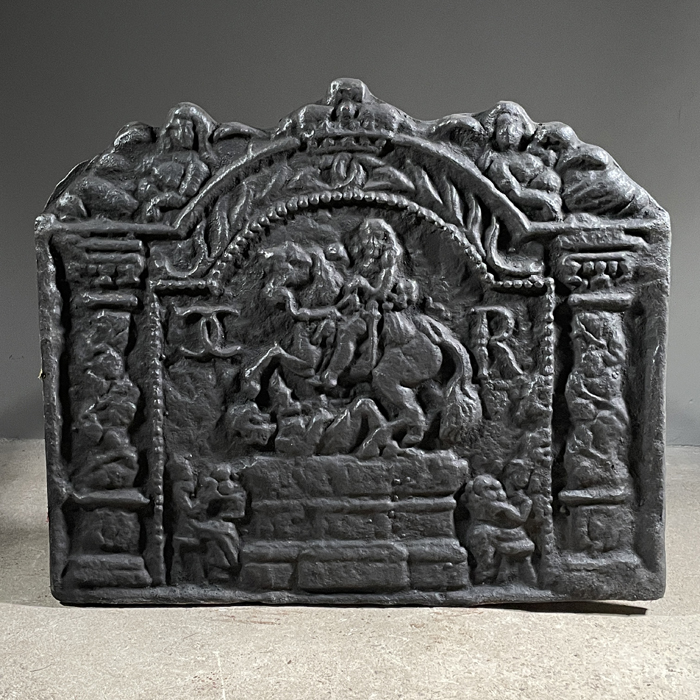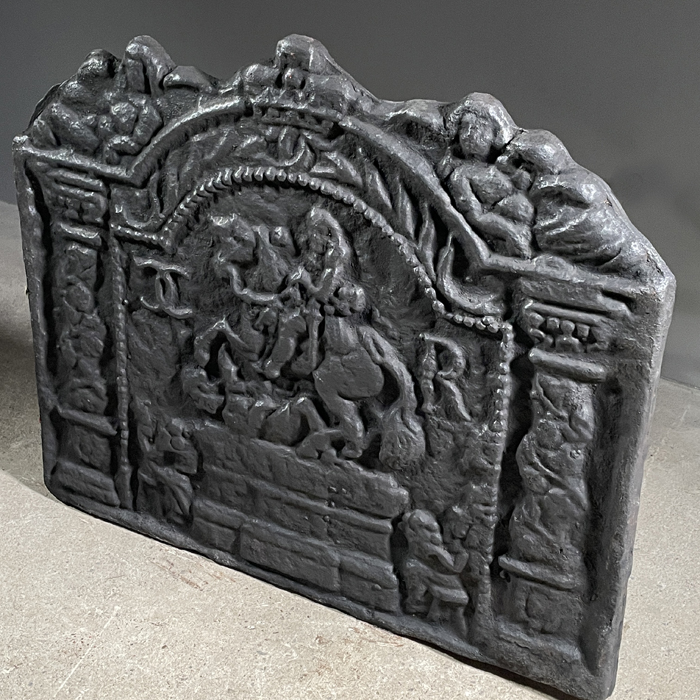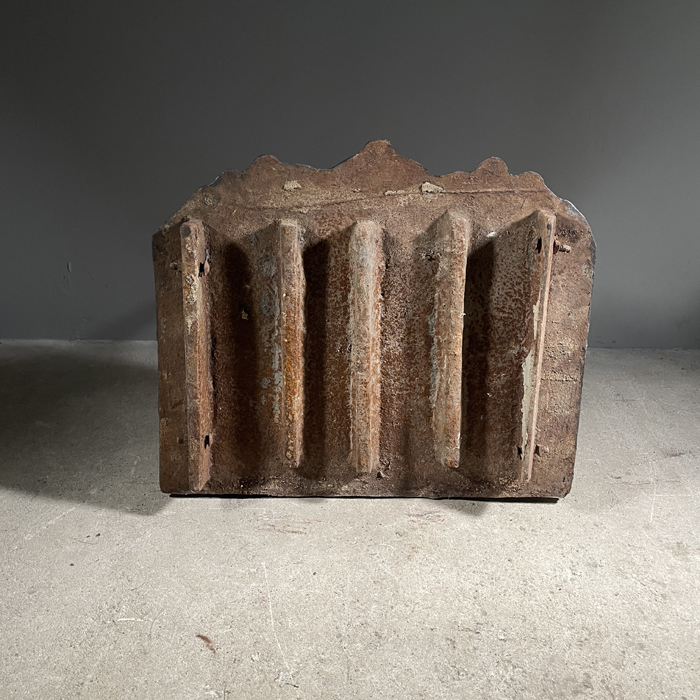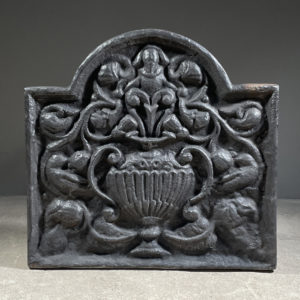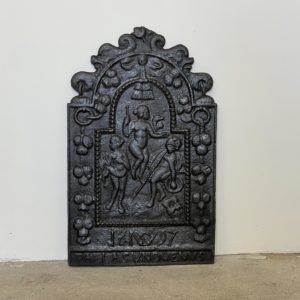An English cast iron fireback
the rectangular plate with a shaped top, cast in relief with a depiction of Charles II as a civic statue on an architectural plinth, the monarch is flanked by his monogram, the plinth is flanked by ladies on stools, the horse appears to be trampling an unfortunate, a pair of solomnic columns provide a frame,
£375
In stock
This fireback, for reasons not known, is mounted with integral vertical ribs to the reverse.
The statue depicted isn’t the sculpture commissioned by Charles I himself from Hubert Le Sueur in 1641 (erected at Charing Cross before Charles’ execution in 1649; torn down by Cromwell, on the restoration of the Monarchy, rescued and positioned at the top of Whitehall where it stands today). It’s a depiction of another equestrian group that stood in The Stocks Market in the City of London from 1672 until 1736 (when it was moved to make way for the Mansion House). It was a well known London landmark. However, whilst to a Londoner it clearly referenced Charles trampling the vanquished Cromwell, it wasn’t originally made to depict those characters and that victory. The statue was originally commissioned by the Polish ambassador in London from an Italian foundry and depicted King John Sobieski on a horse trampling a Turk. Unfortunately the Ambassador ran out of money to pay for it.
Sir Robert Vyner (1631-88) stepped in and bought the sculpture. He had it altered, shipped and installed at the Stocks Market. Vyner had supplied the regalia for the restoration of Charles II, and was appointed as the King’s goldsmith in 1661. He was knighted for his services and was keen to celebrate his allegiance to the restored king. The alterations to the sculpture, in order to anglicise the King and the vanquished figure beneath the hooves, had clearly concentrated more on the King: Cromwell still sports a turban. The statue now stands at Newby Hall near Ripon.
Recently Viewed Items
-
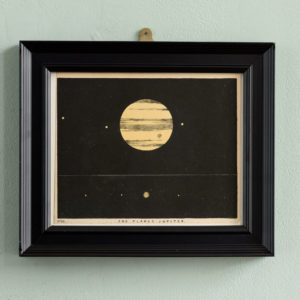
Original astronomy prints published 1843
Original astronomy prints published 1843
Original lithograph published 1843 for ‘A Familiar Lecture on Astronomy’. 'The Planet Jupiter'.

